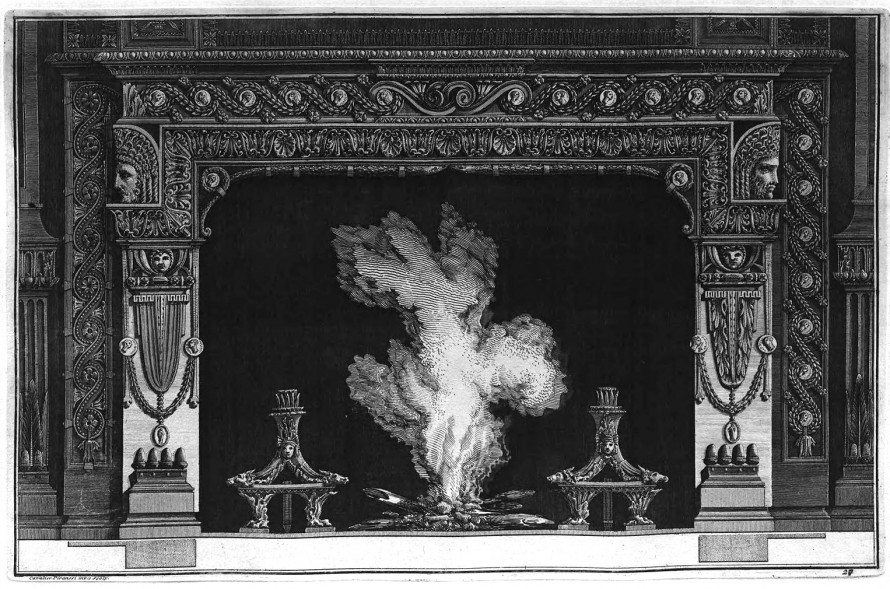Giovanni Battista Piranesi (1720-1778), an Italian architect, designer, antiquarian and engraver, created Diversi maniere d’adornare I cammini: ed ogni altra parte degli edifizi (Various ways of decorating chimneypieces and other parts of the house) in 1769. This work is considered to be one of the greatest contributions to interior design promoting the neoclassical style. His essay, presented in Italian, English and French, advocates the idea that ornament inspired by classical Egyptian, Tuscan, Roman, and Grecian architecture can be adapted for use in the 18th-century interior.
Piranesi supports his theories visually with 70 etched and engraved images of his neoclassical inspired designs for more than 60 patterns for chimneypieces and fireplace mantels, along with other motifs for sedan chairs, clocks, tripods, tables, coaches, and vases. The visual impact of these illustrations is the greatest strength of the book: the highly detailed and aesthetically appealing designs reveal Piranesi’s remarkable skill as an artist and engraver. The designs themselves are visionary, and they introduce dramatic, ornate, and innovative patterns inspired from the classical antiquity.
Piranesi, formally trained as an architect in Venice, became fascinated by the decaying antiquities of Rome and the study of archaeology after he moved to the city in the 1740s and later visited Naples and Herculaneum. He collaborated on guidebooks of Rome in response to traveling to the city on the Grand Tour and later published detailed archaeological studies, notably Antichità Romane de tempo della prima Republiblica… (Roman Antiquities of the time of the First Republic…) in 1756. His study of these ancient ruins became the inspiration for his designs in Diversi maniere. Diversi maniere was an effective way for Piranesi to promote his fantastic, neoclassical designs for a modern-day interior, primarily to those requiring designs for chimneypieces and mantelpieces outside of Italy. Private homes of the English upper class, such as Burghley House in Lincolnshire, directly employed Piranesi’s designs.

(Left): Plate 1 from Diversi maniere d’adornare I cammini: ed ogni altra parte degli edifizi. (Right): Chimneypiece at Burghley House, Lincolnshire, England.
Today is Piranesi’s birthday.

One thought on “Fantasy Fireplaces”
Lynda Whiston on July 12, 2018 at 11:40 am
Hello, This is great, but I have one question, is the Piranesi designed fireplace still at Burghley house? The second image of the Burghley fireplace does not appear to match Piranesi’s drawing. Has it been altered? Was it modified from the original design right from installation??/
Best,
Lynda